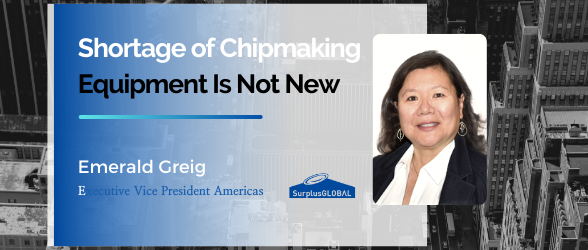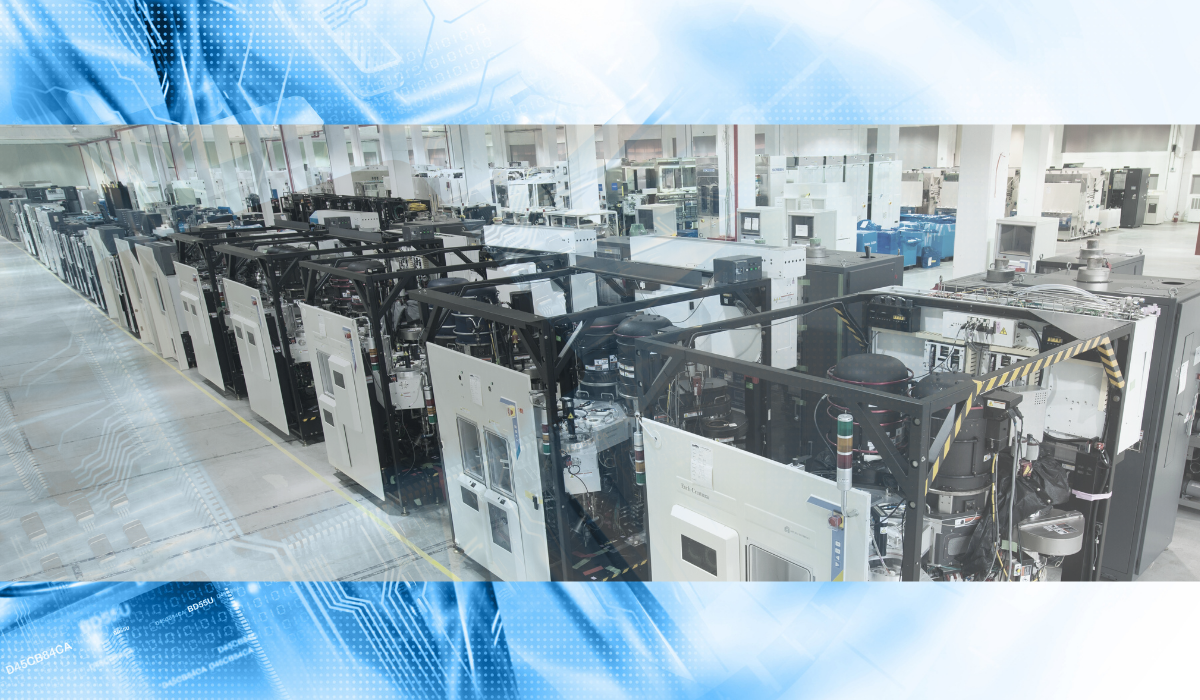 Sitemap
Sitemap

SITEMAP
MEDIA
News Room
Thoughts on the Post-COVID-19 Semiconductor Super Cycle By Emerald Greig, SurplusGLOBAL
- News
- 2021-04-01

Thoughts on the Post-COVID-19 Semiconductor Super Cycle
By Emerald Greig, SurplusGLOBAL
As we head into Q2 of 2021, it seems that the world is finally approaching “normalcy.” But I don’t believe our lives and businesses will ever be the same. Travel is unlikely to return to the same level as pre-COVID 19 for many years. I’m sure many companies will establish tighter travel policies and budgets as virtual conferencing has proven to be beneficial and cost-effective. Patients and doctors who were skeptical of telemedicine are embracing it, and although it’s not perfect, it has filled a needed gap. Online learning essentially happened over a weekend and will now be part of many curriculums and programs.
All of these elements have spurred our semiconductor industry into a “super cycle”. Demand for chips is leading to an increased demand for semiconductor equipment. Capital expenditure in 2020 surpassed $63B and the forecast for 2021 will be over $70B. The secondary equipment market typically makes up about 5%-10% of that. Our inquiries have definitely increased this year. With this in mind, I’d like to share some thoughts for the remainder of the year.
The Shortage of Chipmaking Equipment Is Not New
The semiconductor industry has been experiencing an equipment shortage for some time. It is difficult for original equipment manufacturers (OEMs) to support such a large variety of products and technologies. Some companies use equipment for manufacturing 150mm, 200mm and 300mm wafers. Fabs still run 30-year-old technology on 150mm wafers while the latest technology is manufactured on 300mm wafers. We’ve also seen new technologies like silicon carbide (SiC) being developed on these smaller wafer sizes.
Unfortunately, some OEMs stopped making 150mm and 200mm some time ago and have only recently jumped back into the market. These OEMs have had to balance technological advances, pricing, and manufacturing capacity to meet this demand since their primary focus is on 300mm equipment. Third-party refurbished equipment suppliers have also experienced an increase in demand over the last several years. We see it increasing at all technology levels over the next three to five years. This translates to increased equipment pricing for both new and used equipment, as well as increased lead times.

The Growing Demand for Legacy Tools
Many electronic products we use and are familiar with don't require state-of-the-art technology. For instance, cellphones, electric vehicles, wearables, monitors and industrial products still contain many chips manufactured on 200mm wafers using 200mm equipment. There are still approximately 200 - 200mm fabs worldwide and this makes up about 25% of all wafer capacity regardless of wafer size. These fabs manufacture analog devices, MEMS products, power management IC's, RF devices, discrete devices and sensors. We have also seen an increase in lead times for 200mm equipment. Typical lead times of 3-6 months have increased in some cases to 1 year or more.
This situation has created a dramatic increase in chip making equipment prices and we do not expect much relief there. Many OEMs transitioned to 300mm equipment prior to 2010. Revenue and profit margins are much higher for them on 300mm equipment. 200mm manufacturing was supported by many 3rd parties for a while. However, in 2016 we saw a resurgence in 200mm equipment, and at that time many OEMs began jumpstarting their supply chains. It took some time for them to develop new supply chains, upgrade technology and in some cases hire newly trained engineers to support these new tool sets. All this costs money, which is why we will continue to see an increase in new "legacy" equipment pricing. Because manufacturers and products may not be able to support these prices, we expect the robust 3rd party ecosystem to continue.
SurplusGLOBAL’ S Response to this Demand
One of the advantages we bring to the secondary equipment market is our ability to "recycle" technology. We continuously search for opportunities to purchase large packages of tools from companies that are transitioning technology nodes, moving from 200mm to 300mm wafer size, or changing product lines.
We spend approximately $65-$100 million each year on purchasing equipment and in some cases storing it for the right customer. For instance, a memory company may be changing technology nodes and no longer needs its equipment. This use to happen on a predictable schedule. Instead of scrapping that equipment, SurplusGLOBAL purchases and stores it. Sometimes we only need to store it for one month before relocating it. However, in many cases, we store it for one year or more. We may power it on at a later date if it is in good condition. In some cases, we work with an OEM or 3rd party to have it refurbished and ready for a new customer.

In response to the need for more secondary market equipment, we have opened up additional offices in Japan and Singapore to stay close to and better support our customers in those regions. Finally, our biggest and most recent endeavor is building our Semiconductor Equipment Cluster, which opens in July 2021.


 Facebook
Facebook Linkedin
Linkedin WeChat
WeChat YouTube
YouTube Instagram
Instagram








